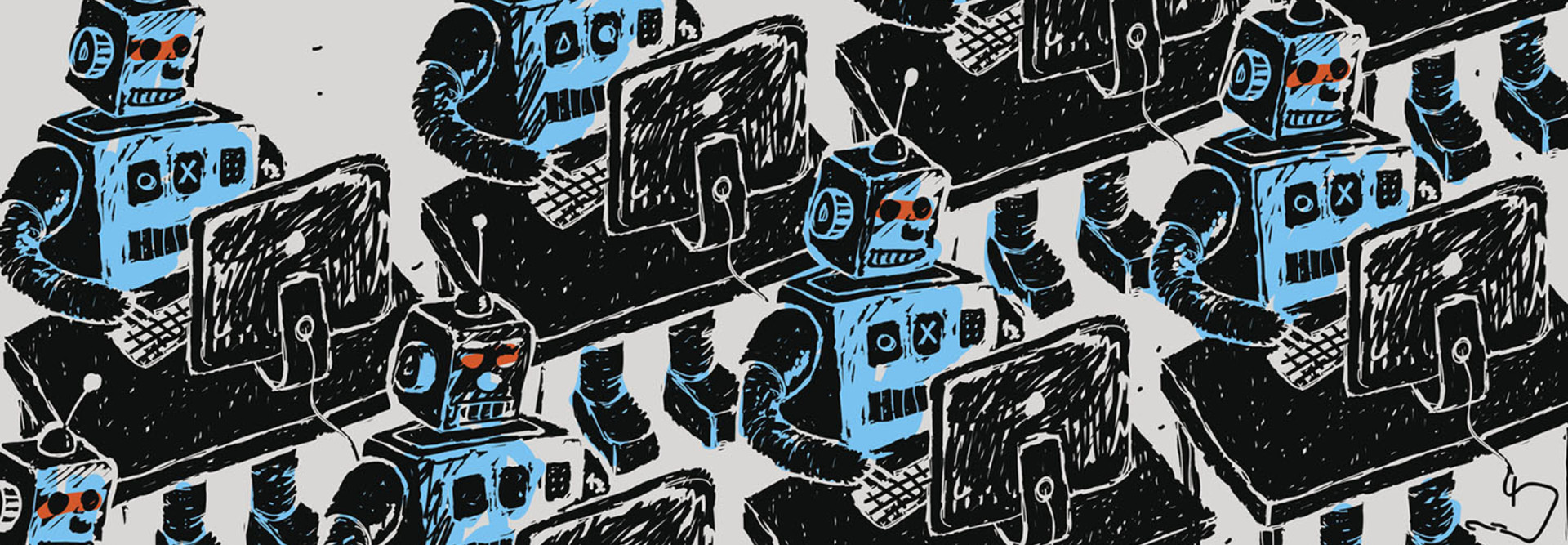4 Ways AI Is Emerging to Save Government Billions in Hours and Dollars
In recent years, artificial intelligence has emerged as a concept on the cusp of revolutionizing everything from medical research to workplace collaboration. And while the technology has recently begun touching into government operations in the form of chatbots, a new study finds that states and cities should begin gearing up for big changes — and big savings — from AI tech.
According to a new report by Deloitte University Press, by automating many of the simple and repetitive tasks government employees perform every day, AI could free up or eliminate millions of hours of labor in the federal government alone.
“At the low end of the spectrum, we estimate, automation could save 96.7 million federal hours annually, with a potential savings of $3.3 billion; at the high end, this rises to 1.2 billion hours and a potential annual savings of $41.1 billion,” the report reads.
Cognitive technologies could help push these cost savings not just by freeing workers from mundane tasks but also by creating more accurate cost projections and overcoming resource constraints, the report notes.
It could also be used in government for several purposes, including predicting fraudulent transactions, such as tax fraud, identifying criminal suspects via facial-recognition software, and sifting through millions of documents in real time to reach the most relevant content as quickly as possible.
“AI presents governments with new choices about how to get work done, with some work fully automated, some divided among people and machines, and some performed by people but enhanced by machines,” the report reads.
So how exactly will automated processes help address pain points for governments and employees?
SIGN UP: Get more news from the StateTech newsletter in your inbox every two weeks
1. Too Much Paperwork? Let Your AI Coworker Tackle It
Think you’re spending too much time on paperwork? So do government employees, with more than half reporting in a recent Governing survey that they had trouble getting their work done in a 35- to 40-hour week due to excessive paperwork burdens.
The report points to Colorado’s most recent Child Welfare County Workload Study, which found that employees at the state’s welfare office were spending 37.5 percent of their time on paperwork and just 9 percent of their time with actual patients and families.
But the good news is that AI could be stepping in soon to slash the paperwork overload.
“At the federal level, our research indicates, simply documenting and recording information consumes a half-billion staff hours each year, at a cost of more than $16 billion in wages alone. Procuring and processing information eats up another 280 million person hours, costing the federal government an additional $15 billion annually,” the report notes.
Automation could free up most, if not all, of those paperwork hours.
2. Making Real-Time Tracking a Reality
The Internet of Things is here, and with its abundance of sensors, cameras and real-time data streaming in, AI can help make everything from sewers to streetlights smarter.
In Los Angeles, for example, the city has implemented smart parking meters that can alert residents to free spaces and when their parking may expire, as well as implement dynamic parking prices for more popular times of the day. Smart streetlights can also dim or activate depending on whether someone is nearby. AI is making these real-time analytics possible and, aside from being cool, smart technology reduces energy and labor costs.
“AI-enabled real-time tracking and reporting can also enable disease surveillance, exemplifying a potentially life-saving capability. The U.S. Centers for Disease Control and Prevention has streamlined its polio virus tracking and reporting process with an AI tool that classifies virus types and separates disease reports into related clusters,” the report says.
3. Busting Those Government Backlogs with Automation
In government, backlogs are everywhere. The Social Security Administration expected to have more than a million cases pending at the end of fiscal 2016, according to the report. To make matters worse, alongside the backlog, 22,000 employees are expected to retire by 2022.
So who will be left to tackle these cases still in the queue? Automation will, of course.
“Cognitive technologies can sift through large data backlogs and take appropriate action, leaving difficult cases to human experts. Robotic process automation, in turn, can reduce backlogs by performing entire end-to-end business processes on a massive scale with little human interaction,” the report notes.
4. Calling on AI for Better Cybersecurity
In many cases, cyberthreats are evolving faster than we can keep up, with a recent report by the ISACA noting that while 80 percent of enterprise IT teams believe they will be attacked this year, few feel confident in their ability to confront cyberthreats. Meanwhile, skills and resources gaps are growing all the time.
But AI can potentially step up to fill this gap.
"This sort of process would allow you to essentially reduce a lot of the time that cybersecurity employees are spending on these kinds of routine manual tasks and free them up to do more important work, but at the same time you're using AI to automate some of your cyber defenses," William Eggers, a co-author of the report and executive director of the Deloitte Center for Government Insights, tells StateScoop. "You can't do it in a manual way anymore, because the people who are attacking you are using automated attacks for the most part and they're coming at you too quickly."









